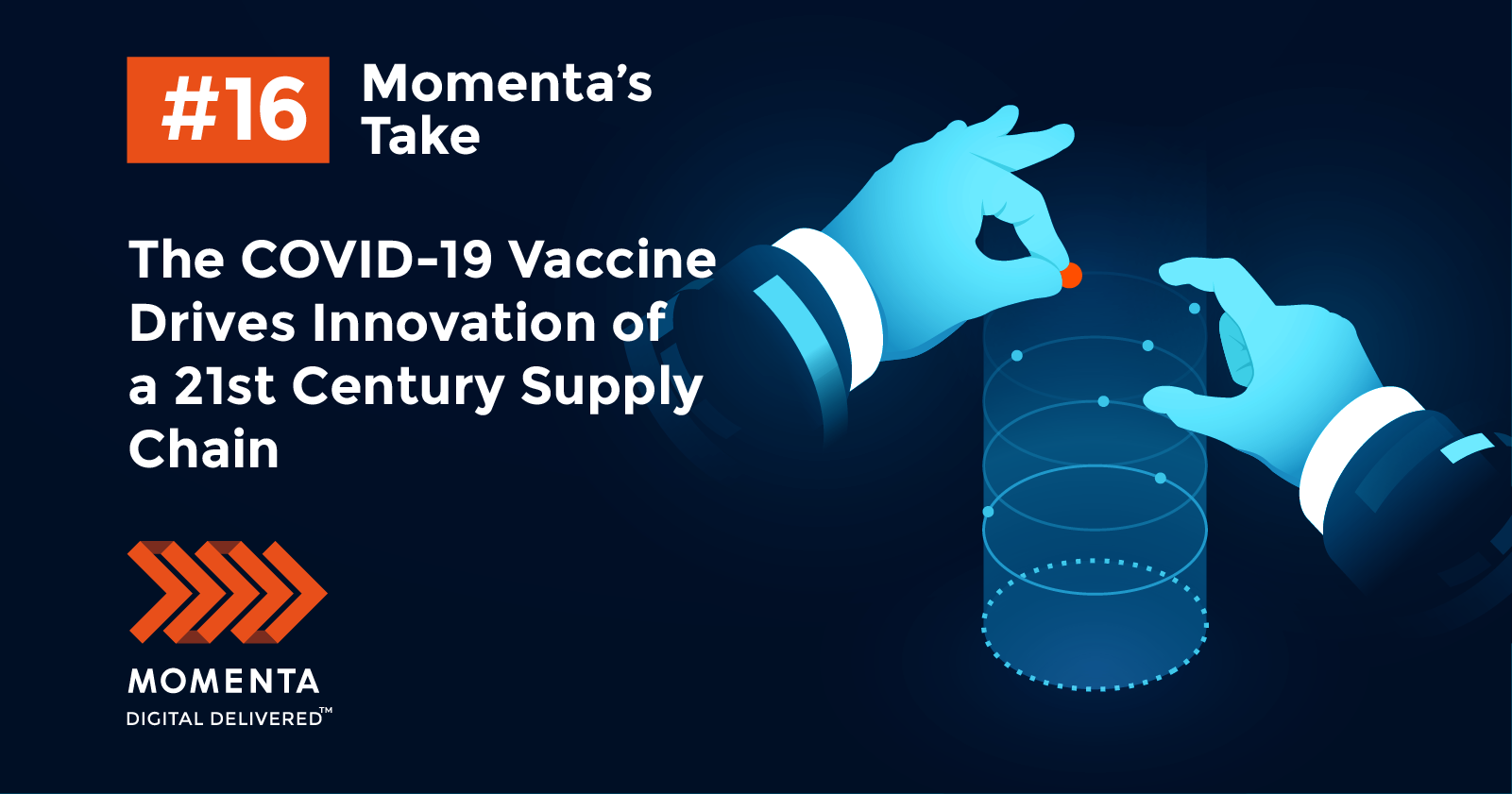Nov 17, 2020
| 5 min read
Momenta's Take #16

The great pandemic of 2020 has caused massive shifts in the global economy as businesses have adjusted to the many changes demanded to slow the spread of the virus - changes in work-from-home, business processes, and value chains. One of the biggest challenges ahead lies in the supply chain for pending vaccines, and we are seeing enormous efforts in investment and innovation to create the delivery infrastructure to mitigate the global pandemic.
On November 9, Pfizer and Biotech announced that their COVID-19 vaccine candidate has 90% efficacy, sending markets soaring in anticipation that vaccines would be available within foreseeable time. The Coronavirus pandemic continues unabated, with parts of the US and Europe seeing spikes in new cases and hospitalizations, and the global count of cases exceeding 52 million. There are other vaccine candidates concurrently in development, but the Pzifer vaccine is targeting availability of 100 million doses.
There are enormous logistical demands in the path from manufacturing a vaccine to delivering a vaccination – and this depends on supply chain innovation. The Pfizer vaccine has a shelf life of just ten days, requires two dosages and needs to be shipped and stored below – 70C degree temperatures. After they reach vaccination centers, vaccine shots must be thawed and injected within five days, if not they go bad. These requirements, are unlike any other supply chain in history, and they create challenges that must be addressed.
Operation Warp Speed was an initiative between the US government and the private sector focused on accelerating both the production and delivery of vaccines for coronavirus. Drugmakers with vaccines in final-stage clinical trials expect their products to require strict temperature controls. The distribution chain, from collecting drugs from remote manufacturing sites to medical teams using warehouses, cargo terminals, airports and final storage points within a matter of days is an unprecedented challenge with risks at every stage. Refrigeration equipment breakdowns, delays in transportation, broken packaging or other mishaps could leave thousands of doses useless. Interviewed by the Wall Street Journal, Brian Bourke of Seko Logistics, said distribution of a COVID vaccine “would be the equivalent of every iPhone, Galaxy and PlayStation launch all at the same time.”
On the logistic front, the global shipping giant Maersk announced a partnership with manufacturer Covaxx to distribute its COVID-19 vaccine (currently in phase 1 clinical trials) once it is approved by regulatory authorities. The agreement lays out the end-to-end supply chain management of the vaccine, from packing to shipping to warehousing, with transportation by air, ocean and ground networks in a "pharmaceutical grade, temperature-controlled supply chain."
Traditionally, logistics providers have had to work with keeping pharmaceuticals at 2-8°C during storage and shipment. With the growth of innovative cellular and genetic therapies, which can involve live cells, this has led to increased need for storage at -80°C down to -180°C (which requires liquid nitrogen).
Investment is ramping up in colder storage. UPS is building “freezer farms” in Venlo, Netherlands and Louisville, KY (both near UPS air hubs) with banks of -80°C freezers The farms will contain a total of 600 freezers that can each hold 48,000 vials of vaccine, according to Bloomberg, with additional freezer capacity planned for South America, Germany and the UK. DHL Global Forwarding recently opened a 20,000-sq.ft. facility in Indianapolis dedicated to life sciences and healthcare logistics with temperature-controlled storage at 15-25, 2-8 and -20° temperatures.
There are growing concerns that the extraordinary expense involved to distribute the Pfizer vaccine will limit the ability to get the vaccine to developing countries such as India, Brazil and other regions where the lack of infrastructure, high costs and warm climate create public health obstacles. Countries need to build deep-freeze production, storage and transportation networks, raising concerns that only rich nations are guaranteed access — and perhaps only the urban populations. While there are few remedies for lack of financial resources, the emergence of sophisticated IoT, analytics, mobile and cloud technologies provides basis for optimism. The WEF has highlighted ways that Blockchain can help drive more transparency and effectiveness in tracking, tracing and monitoring vaccine delivery.
Will the vaccine be delivered quickly enough to help get the world economy back on a sustained growth trajectory? If history is any guide, the innovators at work will help us find a way.

Unlock the Power of Digital - Momenta encompasses leading Strategic Advisory, Talent, and Ventures practices for Digital Industry. Connect with us to find out more about our three practices and how we deliver digital value.